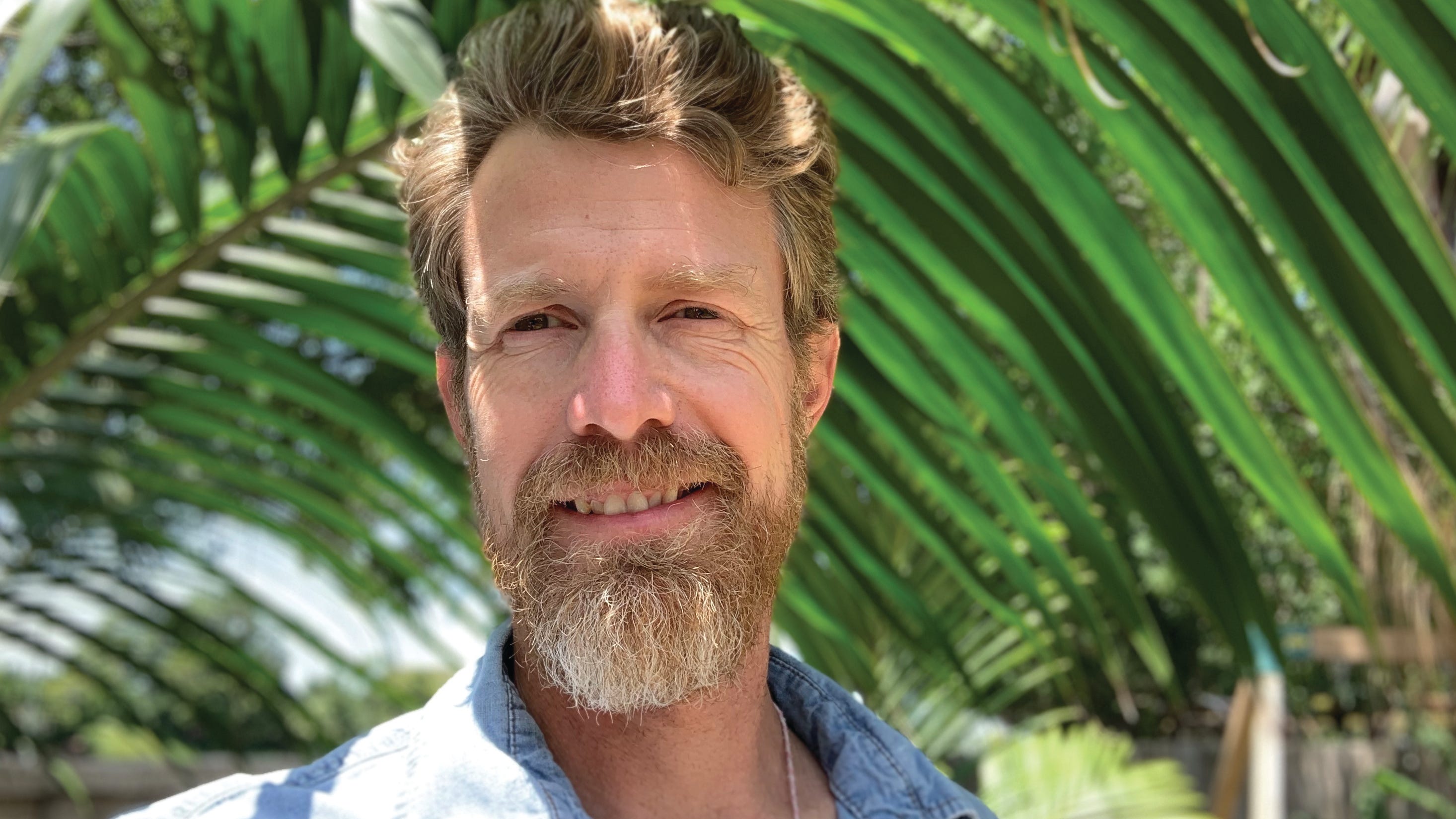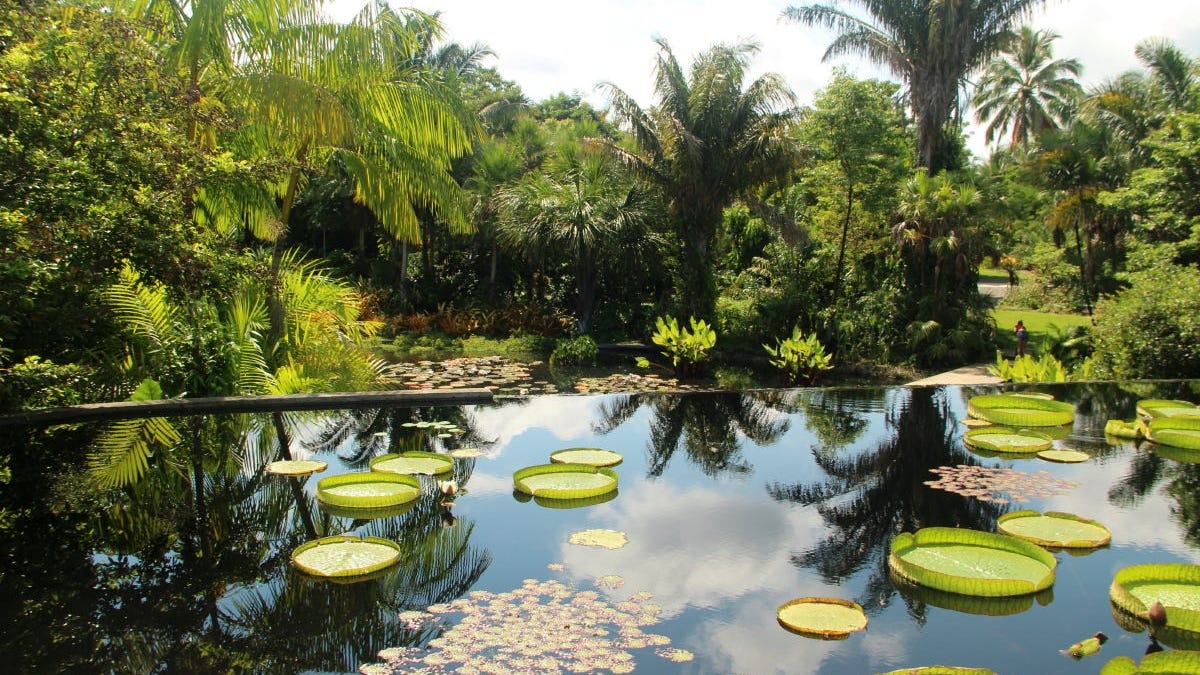Naples Botanical Garden offers landscaping tips after hurricane ian
opinion
| Special to the Naples Daily News
As our community rebuilds following Hurricane Ian, property owners will fortify their homes and businesses against future winds and floods. But structural improvements are only part of the equation. Another great buffer against storms? plants
This recovery period provides an opportunity to rethink our yards and greenspaces and create landscapes that stand up to storms and the region’s changing climate conditions. You don’t need to be a horticultural expert to adopt the scientifically backed principles we share here. With these guidelines, you’ll both add storm protection and improve the region’s environmental health in many other ways.

1. Think in layers
Picture a forest. Are the trees standing in isolation? Or do you see layers of trees, vines, shrubs, grasses?
We don’t expect you to turn your yard into a forest, but you can add layers to your landscape and replicate nature’s complex ecosystems on a small scale. Consider surrounding some of your trees with shrubs and palms, which create a protective buffer. Think about adding groundcover plants, which reduce the ground temperature and prevent moisture loss, lessening irrigation demands. Plant a multi-tiered border along a fence. It’s more visually interesting than a single-species hedge, and it creates a dynamic environment, one that provides habitat for pollinators, beneficial insects, birds, and small mammals.
2. Add diversity
The concept of layering leads us into our next key concept: plant diversity.
Just like in nature, each plant in your yard or community greenspace performs a different role, from the shade tree that cools your home to the ornamental grasses that absorb runoff and keep land-based toxins out of our waterways.
A diverse landscape better withstands invasive pests than a monoculture. These bad bugs generally attack single species, such as the redbay ambrosia beetles that kill laurel trees. If your yard, neighborhood, or streetscape features only a few species, you risk widespread loss to invading pests. Plant diversity offers insurance against such devastation.
A multi-species landscape may also stand up better to storms. For example, if your yard or neighborhood abounds with hardwood trees, intersperse palms among them. These flexible plants are adapted to hurricanes. They serve as a windbreak that buffers those hardwood trees—and your home.

3. Relinquish the power tools
Once you’ve planted your diverse, multi-layered landscape, let it grow! We encourage property owners and homeowners’ associations to limit routine pruning of hedges and shrubs. We recommend a heavy renewal pruning about once per season to keep them in check. The less you manipulate these plants, the sturdier they will grow. You also reduce the use of gas-powered trimmers and other power tools that spew exhaust into the air.
4. Look to the Caribbean
Southwest Florida’s climate is changing. Average temperatures are higher, cool fronts come less frequently, and we anticipate increased flooding, saltier water, intensifying storms, and bigger fluctuations in our wet and dry seasons.
We need to shift the landscape palette from the temperate zones to the tropics. Plants from the Caribbean Islands typically are adapted to storms, saltwater, and heat. They also flourish in high alkaline, sandy soils such as Southwest Florida’s without the need for excess fertilizers and irrigation.
Do a little research before buying new plants (or encourage your community’s landscaper to do so) and see if the species you are considering come from the Caribbean. We champion Florida native plants, too, but beware: Florida is nearly 450 miles long, and Tallahassee’s climate conditions are far different than ours. To us, “native” means plants originating in the peninsula’s lower quarter. You can use the University of Florida’s Environmental Horticulture database to learn more about the native ranges and growing conditions of hundreds of trees and shrubs. (https://hort.ifas.ufl.edu/database/).
The Garden is working to introduce more Caribbean species to the commercial nursery trade. In the meantime, we recommend easy-to-find native and regional species, such as: Florida thatch palm (Thrinax radiata); pigeon plum tree (Coccoloba diversifolia); white tabebuia or Bahamian trumpet tree (Tabebuia bahamensis); horizontal cocoplum (Chrysobalanus icaco ‘Horizontal’); muhly grass (Muhlenbergia capillaris); and Jatropha integerrima, a shrub or small tree known as peregrina, jatropha, or firecracker.
5. Growing standards make all the difference
Don’t dismiss hurricane-uprooted trees as poor choices for the landscape. If the species’ range includes South Florida and the Caribbean, it’s probably well suited for Southwest Florida. But it may not have been well grown.
We find that the greatest reason for tree failures is they’ve spent too long in pots, resulting in twisted, bound roots. The trees may appear healthy above ground, but below ground, they lack the support to survive harsh conditions such as a hurricane.
Inspect your new trees’ roots before planting them. If you find a tight, intertwined circle, separate the roots so they have a better chance of spreading once in the ground. After planting, monitor for signs of compromised roots. The most obvious are failure to grow and leaf tips that turn brown. We suggest requesting a replacement from the seller because you don’t want to subject it to hurricane-force winds.
One way we ensure tree health is by planting them when they’re small. A tiny sapling has a better chance of developing strong roots—and achieving a more impressive height—than a tree that has spent its first few years in a pot. Instant gratification is tempting, but better to have patience and enjoy that tree for decades to come
We encourage you to put these tips to use, share them with your neighbors, and speak to your landscape professional or homeowner’s association about adopting these principles. Together, through the simple act of planting, we can make Southwest Florida a healthier, more resilient place to live.
Biran Galligan is vice-president of horticulture and Chad Washburn is vice-president of conservation at the Naples Botanical Garden.


Comments are closed.